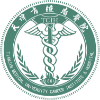Abstract
Extracranial metastasis (ECM) of glioma is a rare condition that occurs in the internal nervous axis. A 23-year-old woman presented with anaplastic oligoastrocytoma (WHO III) in a left temporal tumor. The patient received chemoradiotherapy after surgery in our center. Three years after treatment, the patient experienced multiple ECMs in the right lung, left iliac bone, and multiple swollen subcutaneous nodules including the right clavicle, back of the neck, left forearm, right upper arm, and right clavicle. The patient died of cerebral herniation at the age of 27 due to recurrent intracranial glioma. Treatment of ECM of glioma remains very challenging, and further investigations are needed.
keywords
Introduction
Glioma is the most common primary intracranial tumor. Extracranial metastasis (ECM) of glioma is a rare condition that occurs in the internal nervous axis1-3. With improvements of glioma treatment, the survival time of patients with glioma has been gradually extended. The number of ECM of glioma cases increases yearly. Here, we present a rare case of anaplastic oligoastrocytoma (WHO III) with multiple ECMs and analyze the possible pathways, diagnostic criteria, and prognoses of ECM of glioma. This rare ECM of glioma case report should have valuable implications and provide practical information for clinicians.
Case report
A 23-year-old woman had been complaining of intermittent headache, nausea, and vomiting for 6 months. A brain magnetic resonance imaging (MRI) scan revealed a left temporal tumor (Figure 1A). The patient underwent surgery for the tumor in the Beijing Tiantan Hospital in April 2014. Postoperative MRI scanning showed total resection of the tumor. The pathological results revealed anaplastic oligoastrocytoma (WHO III; Figure 1B-D), and immunohistochemistry findings indicated GFAP (+), Olig-2 (+), and Ki-67 (10%–30%). The patient received chemoradiotherapy in our center from May 14, 2014, to June 27, 2014, and the chemotherapy plan included temozolomide at 200 mg/m2, over 1–5 days, Q28d, for 23 cycles. During chemotherapy, the patient did not manifest evident complications. In March 2016, the patient experienced frequent cough with sputum. The chest computed tomography (CT) scan revealed right lung lesions, right hilar abnormality, and mediastinal lymph node metastasis (Figure 1E and F). The bronchoscopy result identified malignant tumor cells in mucosal tissues, and immunohistochemistry results showed the expression of GFAP (+) and S-100 (+). The lung lesions were highly associated with anaplastic oligoastrocytoma.
The patient was treated with pulmonary radiotherapy and medications, including irinotecan hydrochloride and bevacizumab; however, her clinical symptoms aggravated. In November 2016, the patient experienced left hip pain, and PET-CT scanning revealed a metastatic lesion with a high metabolic state at the left iliac bone. In January 2017, multiple swollen subcutaneous nodules formed at the right clavicle, the back of the neck, the left forearm, the right upper arm, and the right clavicle, without pain. The largest node, measuring approximately 5 cm × 2.5 cm, was found at the right clavicle. The other nodes were approximately 2 cm × 2 cm. The right supraclavicular lymph node biopsy (Figure 1G) revealed glioma cell metastases in fibrous connective tissues, and immunohistochemistry results indicated GFAP (+), Olig-2 (+) (Figure 1H-J), Vimentin (+), and Ki-67 (+ 5%). In March 2017, the repeated MRI revealed a lesion in the left occipital lobe, which suggested intracranial glioma recurrence (Figure 1K). The patient refused a second craniotomy and died of brain herniation at the age of 27, in January 2018.
(A) Preoperative brain MRI revealed the left temporal lesions. (B-D) Pathological result showed anaplastic oligoastrocytoma (WHO III). (B) H&E staining (100 x). (C) GFAP (200 x). (D) Oligo-2 (200 x). (E and F) Chest CT scanning revealed the right lung lesions, right hilar and mediastinal lymph node metastasis. (G) The biopsy of the right supraclavicular lymph nodes. (H-J) Pathologic findings showed fibrous connective tissue can be seen in tumor cell infiltration, considering anaplastic oligodendrocyte metastasis. (H) H&E staining (100 x). (I) GFAP (200x). (J) Oligo-2 (200 x). (K) Repeated MRI revealed a lesion in the left occipital lobe, which suggested intracranial glioma recurrence.
Discussion
The first case report of ECM in primary brain tumors was reported in 1928, but the incidence of this condition is low4-6. In the past, since the brain lacks lymphatic vessels, communication was thought to not occur between the cerebral peripheral vascular space and the extracranial lymphatic vessels. Furthermore, dense connective tissue protects the dural vein. The host organ immune responses to glioma cells prevent primary brain tumors from growing outside of the central nervous system. With the development of microsurgical neurosurgery, radiotherapy, chemotherapy, and other adjuvant therapies in the field of glioma treatment, the survival time of patients with glioma has been significantly prolonged, and more ECMs of glioma have been reported.
Weiss et al.7 first proposed the following diagnostic criteria of ECM of primary brain tumors in 1955: (1) clinical history of primary brain tumors; (2) metastases in accordance with the histological features of primary brain tumors; and (3) complete autopsy that excludes the possibility of any other primary tumor. Whole body imaging can be performed by positron emission tomography/computed tomography (PET/CT), which can identify abnormal, highly metabolic lesions and exclude potentially undiagnosed primary tumors. Therefore, the extensive application of whole body PET/CT imaging can replace complete autopsy as new ECM diagnostic criteria8. Nevertheless, the final pathologic biopsy remains the most accurate diagnostic method for ECM of glioma.
When primary tumors have been surgically treated or subjected to ventricul -operitoneal (VP) shunts, the probability of ECM is relatively high, especially in patients with extended survival, because surgery destroys the blood-brain barrier. Therefore, damage to this barrier is the main cause of ECM of glioma. However, some patients experience ECM without craniotomies. Varan et al.9 reported that ECM was found in two children with glioma at the first diagnosis. Thus, blood-brain barrier destruction is not the only factor that leads to ECM of glioma. Presently, the specific mechanism of ECM remains unclear. The possible pathways of metastasis are as follows: (1) blood flows through primary tumor blood vessels; (2) the tumor proliferates and invades the dural blood flow; (3) the skull and extracranial soft tissues become infiltrated through blood and/or lymphatic spread; (4) cerebrospinal fluid diffusion occurs; (5) and placement of a VP shunt10. Glioblastoma, anaplastic astrocytoma, oligodendroglioma, and gliosarcoma are common primary tumors of ECM, but the incidence of ECM is less than 0.5%11. Common metastatic locations also include the vertebral body, liver, spleen, subcutaneous tissue, cervical lymph nodes, bone, lung, pleura, and spinal cord, which is the most common location of metastatic glioma. In the present case, the patient experienced lung, lymph node, bone, and subcutaneous nodule metastases. ECM may be due to surgical damage to the blood-brain barrier, thereby leading to an opportunity for tumor cells to communicate with extracranial lymphatic vessels and blood vessels. The exposed tumor cells then directly move into injured lymphatic vessels12. Other causes of ECM of glioma may include long-term radiotherapy and chemotherapy, which lead to immune system dysfunction and decreased dura mater density.
ECM of glioma is rare, and its prognosis is poor. Some studies have reported that the median time from astrocytoma diagnosis to the discovery of ECM is 8.5 months, while the median time from ECM discovery to death is only 1.5 months13. Thus, the early diagnosis and treatment of ECM can improve patient prognosis14. Although surgical destruction of the blood-brain barrier causes the production of tumor cells in the ECM, surgery remains the initial treatment for primary intracranial tumors. Therefore, surgeons should focus on the non-tumor principles and ensure the integrity of the dura mater. The VP shunt requires a filter, and post-operative concurrent radiotherapy reduces the possibility of recurrence and metastasis. To date, no standardized treatment for ECM of glioma is available. Patients can select from radiotherapy and chemotherapy to relieve symptoms, but results are not ideal. The detection of tumor-related genes can improve the ECM of glioma treatment results15.
In summary, although the incidence of ECM of glioma is low, the patient prognosis is poor. Patients usually die within 6 months from the discovery of ECM. Therefore, ECM diagnosis must be confirmed as soon as possible, and appropriate effective treatments must be administered immediately.
Footnotes
Conflict of interest statement No potential conflicts of interest are disclosed.
- Received April 6, 2018.
- Accepted July 1, 2018.
- Copyright: © 2018, Cancer Biology & Medicine
This is an open access article distributed under the terms of the Creative Commons Attribution License (CC BY) 4.0, which permits unrestricted use, distribution and reproduction in any medium, provided the original author and source are credited.












